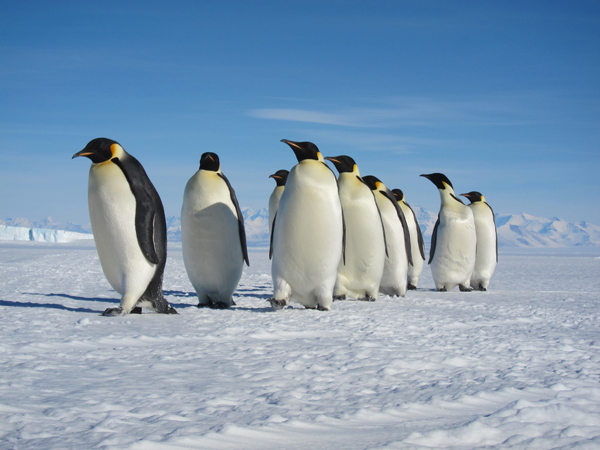Some people travel to see famous monuments, like Paris’ Eiffel Tower or Phnom Penh’s Angkor Wat. Others travel to take in the more ephemeral offerings a place has to offer, like the street art of Sao Palo or a warm beignet from the French Quarter in New Orleans.
These 10 destinations offer a different kind of attraction, their resident animals. None of these cities would be the same without their native creatures. Every year, millions flock to feed a monkey, ride a camel or mimic the penguins. It is the rare person that doesn’t claim the experience to be one of the best of the trip.
From the deer in Nara, Japan, to the narwhals of the Arctic Circle, these destinations will bring to life your spirit animal.
1. Deer at Nara Park
Nara, Japan

Photo by Lauren Kilberg
This ancient capital city makes a perfect day trip from Kyoto. The city is home to T?dai-ji, a temple and UNESCO World Heritage Site that houses the largest wooden Buddha in Japan. While there’s no denying the significance of this structure, the real splendor of a visit to Nara is the more than 1,000 wild deer that roam the temple grounds and greater Nara Park. The deer are considered a natural treasure. While the deer roam freely, they might not let you do the same. Watch your back (literally), many of the deer aren’t shy and have been known to approach aggressively in hopes of getting fed by the crowds of people visiting the temple. Vendors just outside the temple sell crackers for feeding the deer. Don’t worry too much about getting nudged by the hoofed animals, their horns are cut every October in an event known as the Deer-horn Cutting Ceremony.
2. Elephant Nature Park
Chiang Mai, Thailand
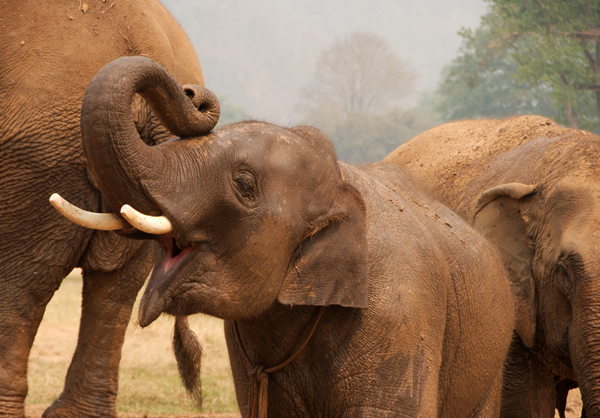
Photo by Christian Haugen / Flickr
The elephant is Thailand’s national animal. While elephant treks and riding these animals is a popular activity among backpackers stopping in Chiang Mai, there are arguably better ways to appreciate and experience Thailand’s most revered animal.
Just under 40 miles outside Chiang Mai is the Elephant Nature Park, a sanctuary that has been rescuing dozens of mistreated elephants from the tourism and logging industry. The park offers single-day, overnight and weeklong visits that will put you face-to-face with the elephants. ENP is all about protecting and caring for these wild animals, so elephant rides are one experience you won’t have while visiting. Instead, you’ll spend meaningful time with the animals while helping feed and bathe them. Proceeds from your visit, along with donations to the Save Elephant Foundation, help to provide a safe environment for elephants.
3. Penguins
Antarctica
There are few animals more closely associated with the barren and frigid landscape of Antarctica than penguins. While it’s not an easy destination to visit, if you do make it to the end of the Earth, you’ll likely find seven of the 17 species of penguins there, including the mighty emperor variety. Visiting is only possible between November and March, during the Southern Hemisphere’s summer, and is typically accomplished via cruise. A number of lines offer routes to Antarctica, including G Adventures.
4. Pushkar Camel Fair
Pushkar, India
Camels play an important role in the culture in India, especially in the northern state of Rajasthan where you can ride a camel back into the Thar Desert on an overnight caravan or catch a camel polo match (it’s just what it sounds like) while visiting Jaipur. One of the greatest events involving this animal, however, is the Pushkar Camel Fair (pictured above) that’s held every November. The event draws hundreds of thousands of locals and tourists to the village of Pushkar. They gather to partake in an array of festivities, the majority of which involve the reported 50,000 or more camels in attendance each year. The camels are elaborately decorated and put on parade, raced and even sold during the fair. This is one of the most famous events in India, so be sure to book your accommodations well in advance if you’re planning a visit.
5. Pigeons at Piazza San Marco
Venice, Italy
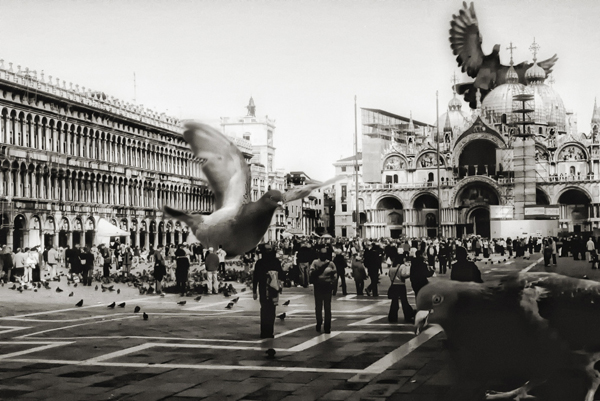
Photo by David Blackwell / Flickr
Yes, lots of cities around the world are plagued with pigeons, but if you’ve been to Venice you can attest to the quantity and enthusiasm of this city’s winged population. Just like the tourists, Venice’s pigeon population congregates on Piazza San Marco. In some ways, the loitering birds are as much a part of the landscape of this famous square as St. Mark’s Basilica or the clock tower. Feeding the pigeons was once as much of a “must do” in Venice as a gondola ride, but the activity was banned in 2008. You’ll still find hoards of them lingering in the square. But be warned, stand still long enough and the Piazza’s pigeons will likely make you their new perch.
6. Snow Monkeys at Joshinetsu Kogen National Park
Jigokudani, Japan

Photo by Yosemite / Wiki Commons
The cold-loving snow monkeys of Japan’s Nagano Prefecture live a life of quasi-luxury in Joshinetsu Kogen National Park, where a large local colony of Japanese macaques ascend on the park’s hot springs before retreating to the forest in the evening. Park visitors can observe the monkeys as they bathe and bask in the steam of the hot springs.
7. Komodo Dragons in Komodo National Park
East Nusa Tenggara Province, Indonesia
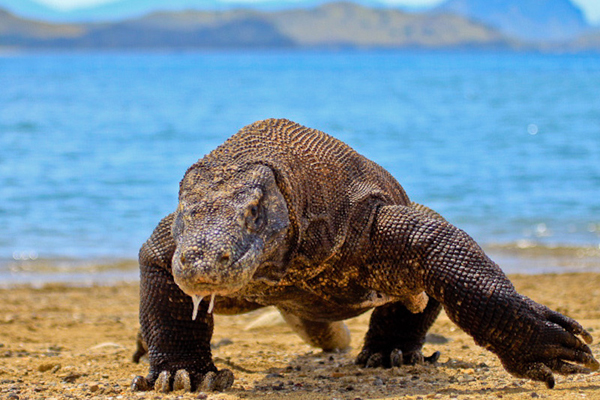
Photo by Adhi Rachdian / Flickr
Dragons really do exist, and you only have to travel to Indonesia for proof. Several islands in the archipelago are home to some 5,700 of the monitors, and they don’t exist anywhere else in the world. While they’re technically not dragons, these giant lizards earned the title as a result of their aggressive nature, venomous bite and sheer size. At a maximum length of 10 feet and weighing up to 300 pounds, these dragons are the largest in the world. You can witness these behemoths yourself at the Komodo National Park, a UNESCO World Heritage Site and one of the New7Wonders of Nature. The park spans 30 islands, including Komodo, Rinca and Padar. A variety of boat tours departing from nearby Flores and Lombok transport tourists to the park.
8. Narwhals
Arctic Circle
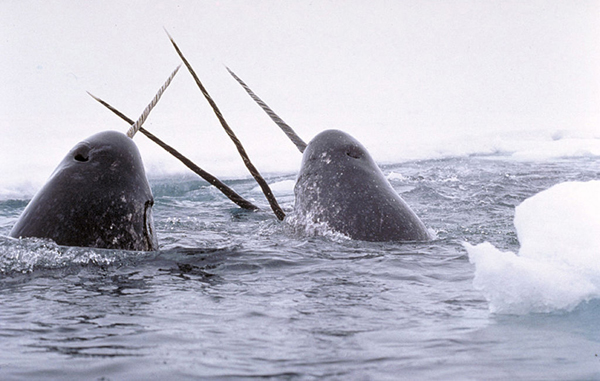
Photo by Glenn Williams – National Institute of Standards and Technology/ Wiki Commons
You can spot these tusked whales, dubbed the unicorn of the sea, within the Arctic Circle in the waters off Canada, Greenland and Russia. There are less than 80,000 of them estimated in the world, as they’ve fallen prey to poachers for their meat and ivory tusk. One of the easiest ways to spot a narwhal is on an Arctic Circle cruise like one run by National Geographic Expeditions. Trips to this region also offer the rare experience of seeing the midnight sun and the Aurora Borealis.
9. Giant Tortoises
Galapagos Islands, Ecuador
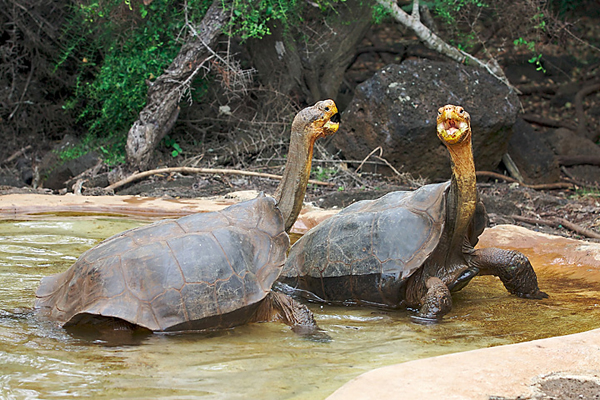
Photo by lightmatter / Wiki Commons
The archipelago off the coast of Ecuador was originally made famous by Charles Darwin, but today it’s the resident giant tortoises that many associate with the Galapagos Islands. These tortoises are unique for a number of reasons including their life span (up to 100 years on average) and their size (they’re the largest living tortoises on Earth). If you plan on making the long but rewarding journey to the Galapagos, be sure to visit the Charles Darwin Research Center on Santa Cruz Island. Tours are available and led by researchers from the center. Before leaving the island, head to the highlands to see the tortoises in the wild. The Tortoise Breeding Center in Puerto Villamil on Isabela Island is another great location for learning about and witnessing the tortoises.
10. Giant Panda Bears
China
As the national animal of China, the panda bear is practically the spokesman for the country. Sadly, the panda is also classified as an endangered species. Seeing pandas while visiting China is possible throughout the country and at a variety of zoos. If you want to witness them in a more natural habitat, head to Bifengxia Panda Base outside the city of Ya’an. More than 80 pandas are protected at this park. Volunteer programs are available and give you up close encounters with the pandas, which include helping staff with feedings and cleaning. The Giant Panda Breeding and Research Base in Chengdu, home to around 60 pandas, offers another opportunity to see them. Since the base runs a breeding program, you may get to see baby pandas as well. For a small fee, you can even hold one. Along with breeding, the base trains the bears for a life in the wild with the intention of releasing them once they’re prepared.
Photo by Koshy Koshy, CC-BY
Lauren Kilberg is a freelance writer and blogger residing in Chicago. Her travels have found her camping near the Pakistani border of India, conquering volcanoes in the Philippines and being humbled in Haiti. She spent two years living and working in South Korea before repatriating to the United States. Follow her blog Double Takes.
